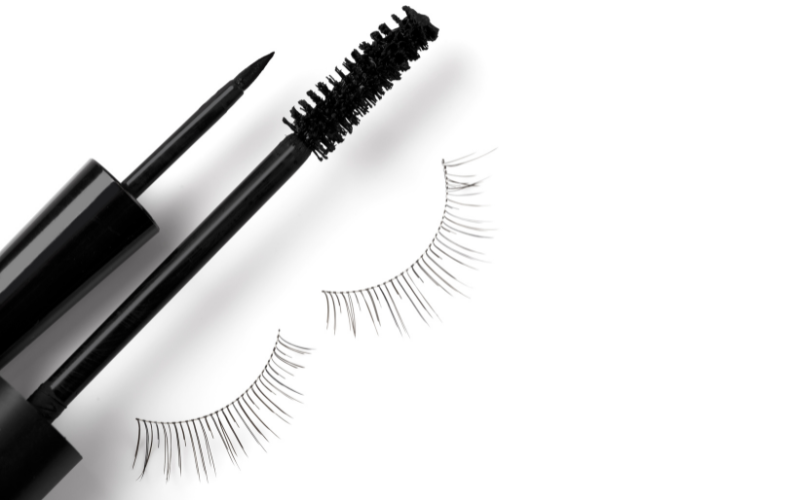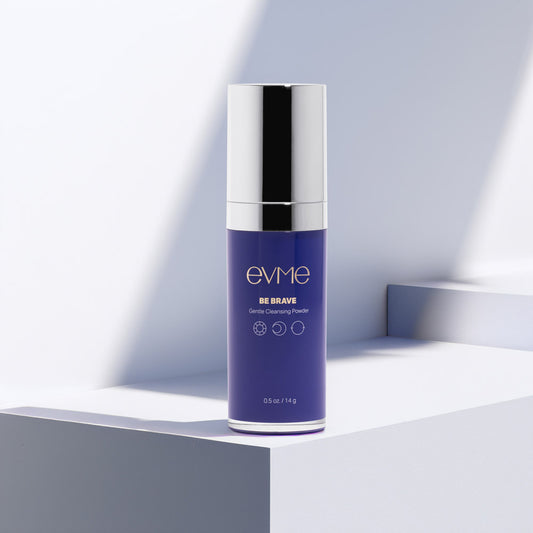Try Evme, allergist-created luxe skincare for sensitive and allergic skin.
Shop All ProductsAnother major allergen you need to know about: Rubber accelerators
June 13, 2023

Back To Articles
Today I want to discuss an allergen that most of you may not have heard of. I have previously highlighted latex as a natural rubber allergen. I want to introduce you to another allergen that can mimic latex-allergy.
Oftentimes, I have patients who come to me with reactions to gloves or band-aids. They automatically assume they are allergic to latex, but get confused if they continue to react to products that are supposed to be latex-free. This is a classic reaction to rubber accelerators, another major group of allergens that are in products all around us. This allergy affects close to 4% of the general population, and may be even more prevalent, potentially up to 10%, if you come in contact with rubber products regularly through work exposure.
Rubber accelerators are chemicals used in the production of both natural and synthetic rubber products like gloves, bandages, tires, and footwear. These accelerators are added to natural AND synthetic rubber to speed up the manufacturing process and help rubber products become more strong, elastic, and durable.
Natural rubber gloves, aka latex gloves, have both latex and rubber accelerators in them. Nitrile gloves - you know the purple or blue gloves that are most commonly used in the healthcare setting now - don’t have latex, but do have rubber accelerators. If you are allergic to latex and/or rubber accelerators, the best glove option you have is a vinyl glove (the ones that are more see-through), but be careful, because vinyl gloves don’t always protect well from all types of chemicals.
Symptoms of this allergy can range from skin rash to severe allergic reactions like anaphylaxis. Contact allergy to accelerators is particularly common in occupational groups with long periods of wearing such protective gloves, including health care, food processing, or cleaning occupations.
How do I know if I am exposed to rubber accelerators?
Some general groups of chemicals that act as rubber accelerators include: thiurams, dithiocarbamates, thiazoles, guanidines, and thioureas.
These are some ingredients that you should avoid if you think you are reacting to rubber accelerators:
Thiurams:
Tetramethylthiuram disulfide
Tetramethylthiuram monosulfide
Tetraethylthiuram disulfide
Dipentamethylene thiuram disulfide
Tetramethylthiuram disulfide
Tetramethylthiuram monosulfide
Tetraethylthiuram disulfide
Dipentamethylene thiuram disulfide
Dithiocarbamates:
Zinc diethyldithiocarbamate
Zinc dibutyldithiocarbamate
Zinc dimethyldithiocarbamate
Zinc dipentamethylenedithiocarbamate
Zinc dibenzyldithiocarbamate
Zinc diisononyldithiocarbamate
Zinc diethyldithiocarbamate
Zinc dibutyldithiocarbamate
Zinc dimethyldithiocarbamate
Zinc dipentamethylenedithiocarbamate
Zinc dibenzyldithiocarbamate
Zinc diisononyldithiocarbamate
Thiazoles:
2-Mercaptobenzothiazole
N-cyclohexyl-2-benzothiazyl sulfenamide
2,2‘-Dibenzothiazyl disulfide
2-(4-Morpholinyl mercapto)benzothiazole
2-Mercaptobenzothiazole
N-cyclohexyl-2-benzothiazyl sulfenamide
2,2‘-Dibenzothiazyl disulfide
2-(4-Morpholinyl mercapto)benzothiazole
Thioureas:
Diphenylthiourea
Dibutylthiourea
Diethylthiourea
Thiourea
Guanidines 1,3-diphenylguanidine
Triphenylguanidine
Diphenylthiourea
Dibutylthiourea
Diethylthiourea
Thiourea
Guanidines 1,3-diphenylguanidine
Triphenylguanidine
Overall, rubber accelerator allergy is growing, but increased awareness, proper prevention, and management are necessary to reduce the incidence and severity of this allergy.
Recommended articles
close
Evme Sans-Allergenic Skincare Products
- Choosing a selection results in a full page refresh.













